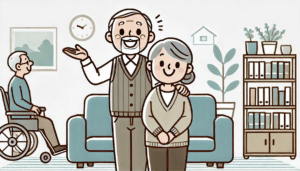
Pittsburgh is a beautiful city in Pennsylvania with a whole lot of things to do. The Steel City is home to the Carnegie Museum of Natural History and the Phipps Conservatory and Botanical Gardens.
Like every other city, Pittsburgh has a good number of nursing homes. These places provide a place for the elderly, meeting their daily needs, be it in terms of accommodation or healthcare.
Sadly, abuse is common in these places, given the age and health condition of the average nursing home resident. What’s worse is that most signs of abuse go unnoticed.
This is where this article comes in. It talks about five signs you should look out for if your loved one is in a nursing home.
There’s another reason to look out for the signs. If you find out a loved one is a victim, then it’s vital to reach out to an experienced nursing home abuse attorney in Pittsburgh. This legal professional offers the advice required to recover compensation and bring the at-fault parties to justice.
Here are the common signs of neglect or abuse that you should look out for.
1. Unexplained Physical Injuries
Unexplained physical injuries are one obvious sign of abuse. Look for cuts, bruises, or injuries that cannot be clearly explained. Residents of nursing homes can suffer from physical abuse like slapping, hitting, or being restrained against their will.
Unexplained or frequent physical injuries can also be a sign of neglect, especially if the staff cannot provide a reasonable explanation. If the injuries are disproportionate to the circumstances or your loved one shows fear towards a specific staff member, it can be a sign of intentional harm.
2. Sudden Behavioral Changes
Any sudden change in the behavior of a loved one is a red flag. If a loved one who was previously social and calm becomes anxious, withdrawn, or fearful, it can be an indication of abuse.
Nursing home residents might experience threats, verbal abuse, or intimidation by their caregivers, which could cause significant distress. Look for signs of agitation, depression, fear, or confusion, especially around certain people. These behaviors are usually a result of mistreatment, though they can be elusive and difficult to notice.
3. Lack of Personal Hygiene or Unkempt Appearance
Neglect can be seen through the poor personal hygiene of a loved one. If they are constantly dirty, wearing soiled clothes, or have body odor, it can be a sign of a lack of necessary assistance by the caregivers.
Hygiene is an important part of daily care, and neglecting it can cause health problems like infections. Observe if your loved one is getting assistance using the restroom, bathing, and dressing. If these needs are unmet, it could be a sign that the staff in the nursing home are negligent or understaffed.
4. Bedsores
Pressure sores are another sign of negligence. They develop when an individual is left in one position without being moved or repositioned for a long time. Bedridden patients are vulnerable to bedsores, which can be avoided with attention and proper care.
If you notice blisters, redness, or open sores on a loved one’s skin, especially in areas like hips, heels, and lower back, it can indicate the nursing home’s staff’s failure to provide necessary care. Bedsores can cause severe infections and other complications if not treated properly.
5. Lack of Proper Nutrition or Hydration
Dehydration and malnutrition are other signs of neglect that have serious consequences for elderly residents. If a loved one appears weak, is losing weight, and has trouble staying awake, it could be a sign that they are not getting enough water and food.
Malnutrition can slow healing, weaken the immune system, and lead to other health problems. Check if your loved one eats regularly and whether it’s enough. If they often complain of hunger or thirst and are not provided with enough nutrition, it is a cause for concern.
Final Thoughts
Nursing home abuse has far-reaching consequences. The victim and their loved ones will be under immense stress and, not to forget, huge financial hardship.
An experienced nursing home abuse attorney can help victims get the justice they deserve. You’ll need the assistance of this legal professional to fight it out against the negligent nursing home and win fair compensation.
If you have a loved one in a nursing home and resonate with one or more signs listed in this article, you should act quickly. Remove them from the nursing home and seek medical assistance immediately. Once that’s done, contact a lawyer to initiate the legal side of things.









